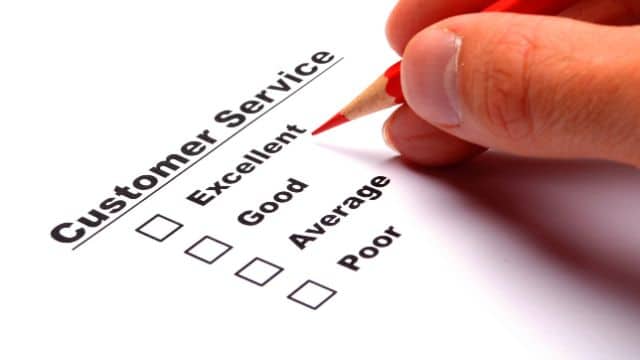Dealing with an angry customer can feel like navigating a minefield, but with the right approach, these situations can be turned into opportunities for growth and stronger relationships. According to research, 91% of dissatisfied customers who don’t voice their complaints simply leave. This highlights a critical truth: a vocal, upset customer is giving you a chance to make things right. By addressing their concerns thoughtfully, you can not only resolve the issue but also build loyalty. Below, we outline six proven strategies, enriched with examples, practical tips, FAQs, and inspiring quotes from business expert Hirav Shah to guide you in managing angry customers effectively.
Table of Contents
6 Proven Strategies to Handle Angry Customers
1. Handle Angry Customers – Listen Actively and Attentively

The first step in calming an angry customer is to listen—truly listen. Be fully present, focusing on the emotions and intent behind their words rather than their anger. Active listening shows respect and helps you understand the root of their frustration.
- How to do it: Avoid interrupting, even if the customer is upset or repetitive. Paraphrase their complaint to confirm understanding, and ask clarifying questions to show engagement.
- Example: Imagine a customer calls a retail store, furious about receiving a damaged product. Instead of cutting them off, the representative listens patiently and says, “I understand you received a damaged item, and that must be frustrating. Can you confirm the product and describe the damage so we can address this quickly?”
- Tip: Use neutral phrases like “I hear you” or “I understand” to acknowledge their feelings without escalating the situation.
2. Offer a Sincere Apology
An apology, even if you believe the issue isn’t your fault, can work wonders in de-escalating tension. A heartfelt apology demonstrates empathy and shows the customer you value their experience.
- How to do it: Be genuine and specific. Avoid generic apologies like “I’m sorry you feel that way.” Instead, address the issue directly.
- Example: In a restaurant, a customer is upset about a delayed order. The manager might say, “I’m truly sorry for the delay in your meal. We’re experiencing a busy evening, but that’s no excuse for keeping you waiting. Let me make this right for you.”
- Tip: Pair your apology with an empathetic statement, such as, “I can imagine how disappointing this must be.”
3. Stay Calm and Composed
When faced with an angry customer, it’s natural to feel defensive, but matching their tone will only worsen the situation. Maintaining your calm sets the stage for a productive conversation.
- How to do it: Take deep breaths, use a steady tone, and avoid negative or confrontational language. Phrases like “You’re wrong” or “That’s not our fault” can inflame the situation.
- Example: A customer yells at a call center agent about a billing error. The agent responds calmly, “I understand this charge is unexpected. Let’s review your account together to clarify and resolve this.”
- Tip: Practice positive language, such as “Let’s find a solution” instead of “We can’t do that.”
4. Don’t Take Criticism Personally
An angry customer’s frustration is typically directed at the product, service, or situation—not you as an individual. Staying professional and detached from personal offense allows you to focus on problem-solving.
- How to do it: Remind yourself that the customer’s anger stems from their experience with the company. Respond with professionalism, not emotion.
- Example: A software user is upset about a glitch that caused data loss. The support agent says, “I’m sorry the glitch caused this issue. Let’s work on recovering your data and preventing this in the future,” instead of feeling attacked.
- Tip: View criticism as feedback for improvement, not a personal attack.
5. Resolve the Issue Promptly

Words alone won’t suffice—take action to fix the problem. Your goal is to resolve the issue as quickly as possible or set clear expectations if immediate resolution isn’t feasible.
- How to do it: If you can fix the issue on the spot, do so. If not, communicate a timeline and, if necessary, escalate to a senior team member.
- Example: A hotel guest complains about a noisy room. The front desk offers, “I’m so sorry for the disturbance. Let’s move you to a quieter room right away. If that’s not possible tonight, we’ll ensure it’s resolved by tomorrow and offer a discount for the inconvenience.”
- Tip: Follow up after resolution to confirm the customer’s satisfaction.
6. Use Satisfaction Surveys to Learn

Angry customers often reveal broader issues. Conducting customer satisfaction surveys can help you identify patterns and improve your business.
- How to do it: After resolving an issue, send a brief survey asking for feedback on the experience. Use the data to address recurring problems.
- Example: A retail company notices multiple complaints about slow shipping. After analyzing survey responses, they streamline their logistics process, reducing delivery times.
- Tip: Keep surveys short and specific to encourage participation.
Handle Angry Customers – Real-World Examples
- Retail Scenario: A customer returns a defective blender to an electronics store, visibly upset. The employee listens patiently, apologizes sincerely, and offers a replacement plus a discount on their next purchase. The customer leaves satisfied and later posts a positive review.
- Service Industry: A client at a spa is angry about a missed appointment due to a booking error. The manager apologizes, offers a complimentary service, and ensures the system is updated to prevent future errors. The client returns for future visits.
- Tech Support: A user contacts a software company about a subscription issue. The support agent remains calm, resolves the billing error, and follows up with a survey. The feedback highlights a confusing interface, prompting a redesign.
FAQs About Handling Angry Customers

Q: What if the customer is being unreasonable?
A: Stay calm and professional. Focus on what you can control, such as offering a solution within company policy. If the situation escalates, politely involve a manager.
Q: How do I handle a customer who keeps interrupting?
A: Let them vent initially, then gently steer the conversation by saying, “I want to fully understand your concern—can you share more details?”
Q: Should I offer compensation every time?
A: Not necessarily. Assess the situation. If the issue is significant, a gesture like a discount or refund can rebuild trust, but always follow company guidelines.
Q: What if I can’t resolve the issue immediately?
A: Be transparent. Explain the steps you’ll take, provide a timeline, and follow up as promised.
Q: How can I prevent customers from getting angry in the first place?
A: Proactively communicate, set clear expectations, and regularly gather feedback through surveys to address issues before they escalate.
Inspiring Quotes from Hirav Shah
- “It takes months to find a customer but seconds to lose one. Treat every complaint as a chance to build loyalty.”
- “The customer is always right—not because they are, but because their trust is your business’s lifeline.”
- “Empathy turns an angry customer into a loyal advocate. Listen, apologize, and act.”
- “A dissatisfied customer is a teacher in disguise. Learn from them to grow.”
Final Thoughts

Handling angry customers is a skill that requires patience, empathy, and action. By listening actively, apologizing sincerely, staying calm, handling criticism professionally, resolving issues promptly, and learning from feedback, you can turn challenging situations into opportunities. As Hirav Shah advises, put yourself in the customer’s shoes, solve their problem, and show you’re on their side. In doing so, you not only














